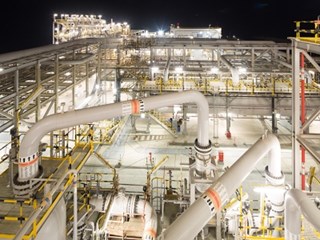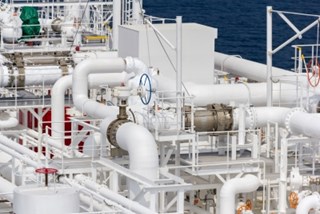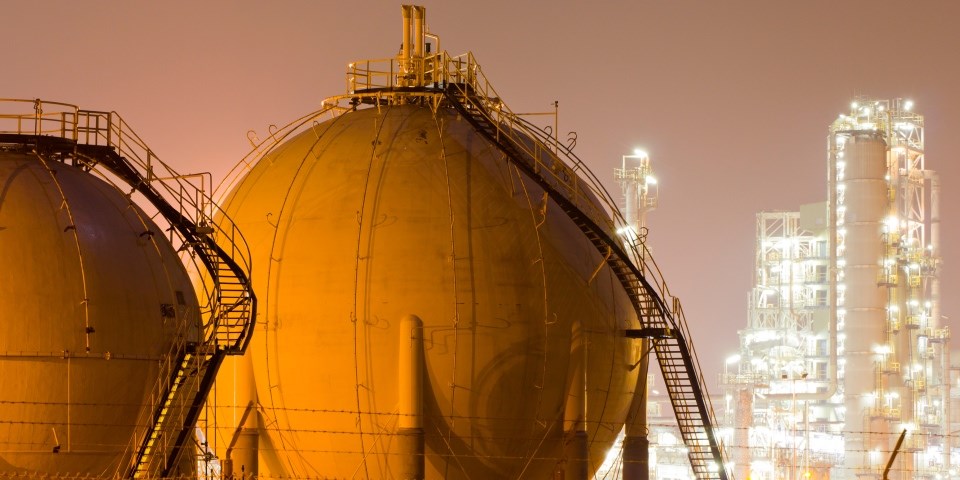^ LNG storage on LNG carrier Dreamstime
Article by Lucien Joppen, Valve World
___
 Currently, natural gas takes up a rather insignificant part of China’s energy mix. It accounts for 6%, far below the world average of 24% (source: Paulson Institute). This percentage, however, is bound to rise. Over the last two decades, natural gas consumption has already risen strongly: from just 47 billion cubic meters (bcm) in 2005 to over 200 bcm in 2016. This growth is expected to accelerate in the coming years, according to IEA. Demand is forecast to grow by 60% between 2017-2023, mainly driven by government policies to reduce local air pollution by switching from coal to gas. Just to put this demand growth into perspective, China alone will account for 37% of the growth in global demand in the next five years. The country will also overtake Japan and will become the largest natural gas importer by 2019. The IEA also forecasts strong growth in gas use in other parts of Asia, including in South and Southeast Asia, driven by strong economic growth and efforts to improve air quality.
Currently, natural gas takes up a rather insignificant part of China’s energy mix. It accounts for 6%, far below the world average of 24% (source: Paulson Institute). This percentage, however, is bound to rise. Over the last two decades, natural gas consumption has already risen strongly: from just 47 billion cubic meters (bcm) in 2005 to over 200 bcm in 2016. This growth is expected to accelerate in the coming years, according to IEA. Demand is forecast to grow by 60% between 2017-2023, mainly driven by government policies to reduce local air pollution by switching from coal to gas. Just to put this demand growth into perspective, China alone will account for 37% of the growth in global demand in the next five years. The country will also overtake Japan and will become the largest natural gas importer by 2019. The IEA also forecasts strong growth in gas use in other parts of Asia, including in South and Southeast Asia, driven by strong economic growth and efforts to improve air quality.
Prominent role for industry

Shale gas revolution
 Apart from the United States, Australia and the Russian Federation are the main contributors to export growth. Russia is expected to step up its LNG export, taken in account its investments in LNG exploitation and liquefaction in the Arctic North (see the Project report on Yamal and Gydan by Novatek and Total, see pages 23 and 24). As for the market share in the global LNG trade, Qatar tops the list with 27,6% (IHS Markit, 2017), followed by Australia and Malaysia. The increase in demand and supply has led to an increase in terms of project development across the globe. As mentioned before, Russia has invested and is likely to invest more in natural gas exploitation and liquefaction in Siberia. Given its dominant position in production and export growth, it’s no surprise that the USA dominates project development with major LNG export projects coming online in 2019. Meanwhile, a so-called second wave of LNG export projects is pending. Ultimately, this step-up in liquefaction capacity will propel the US forward as an exporting nation, challenging Qatar’s position as a global export leader.
Apart from the United States, Australia and the Russian Federation are the main contributors to export growth. Russia is expected to step up its LNG export, taken in account its investments in LNG exploitation and liquefaction in the Arctic North (see the Project report on Yamal and Gydan by Novatek and Total, see pages 23 and 24). As for the market share in the global LNG trade, Qatar tops the list with 27,6% (IHS Markit, 2017), followed by Australia and Malaysia. The increase in demand and supply has led to an increase in terms of project development across the globe. As mentioned before, Russia has invested and is likely to invest more in natural gas exploitation and liquefaction in Siberia. Given its dominant position in production and export growth, it’s no surprise that the USA dominates project development with major LNG export projects coming online in 2019. Meanwhile, a so-called second wave of LNG export projects is pending. Ultimately, this step-up in liquefaction capacity will propel the US forward as an exporting nation, challenging Qatar’s position as a global export leader.
Part 2 of this article will be available next week!


